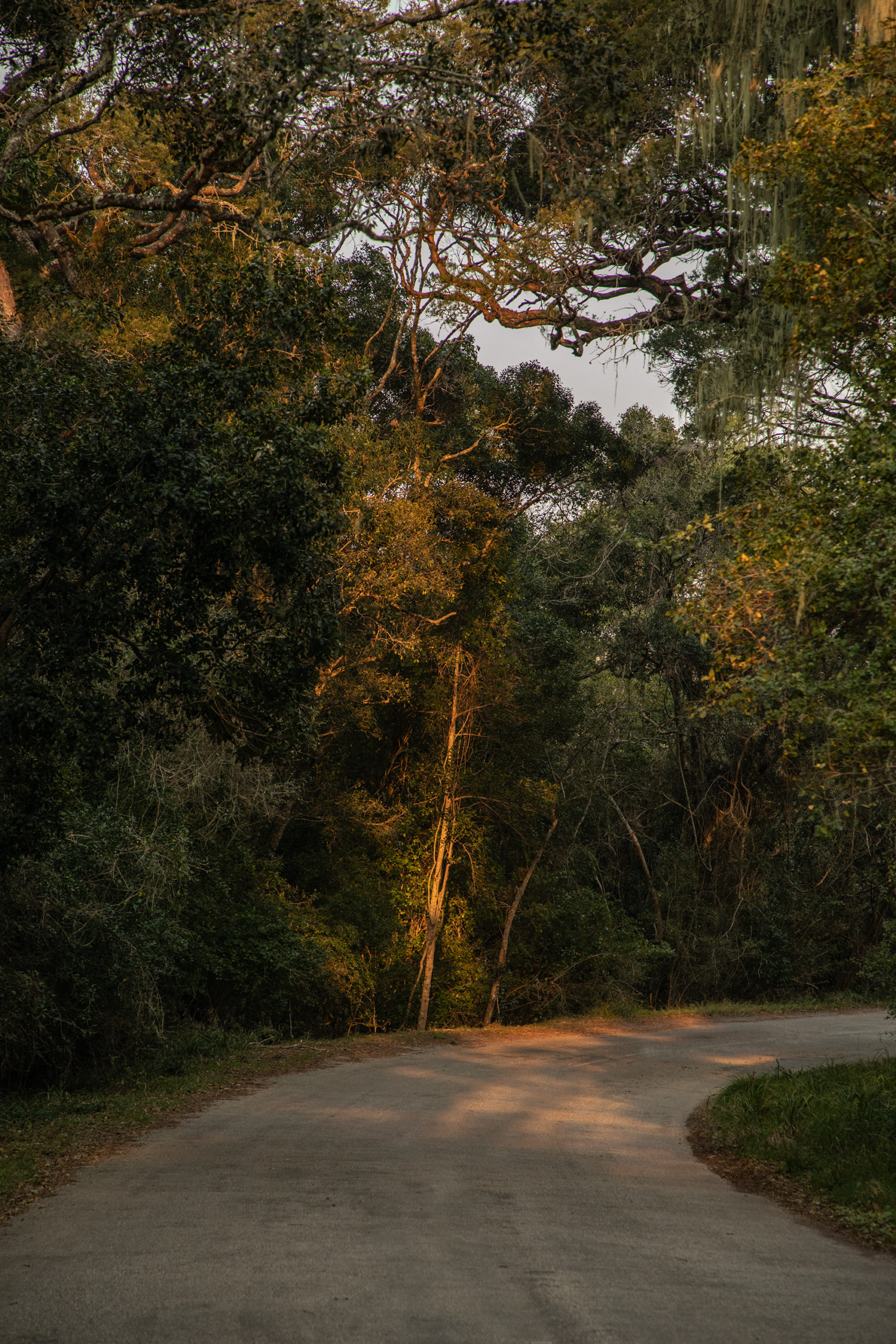
“It was a long and a hard process — ja, but after lots of fights, lots of struggles… we’re at a point where we can start to rebuild Covie and restore Covie’s dignity to where it was,” said Cyril Constable, chairperson of the Covie Communal Property Association (CPA) which serves as custodian of the restitution project.
The association is spearheading the rebuilding of the Covie settlement after a successful land claim which was handed over by a high-level government delegation earlier this year. At the heart of the claim is a community whose land was taken away for plantations by the National Party government in 1978. The declaration of the settlement as ‘coloureds only’ under the Group Areas Act meant that the town was left without service provision.
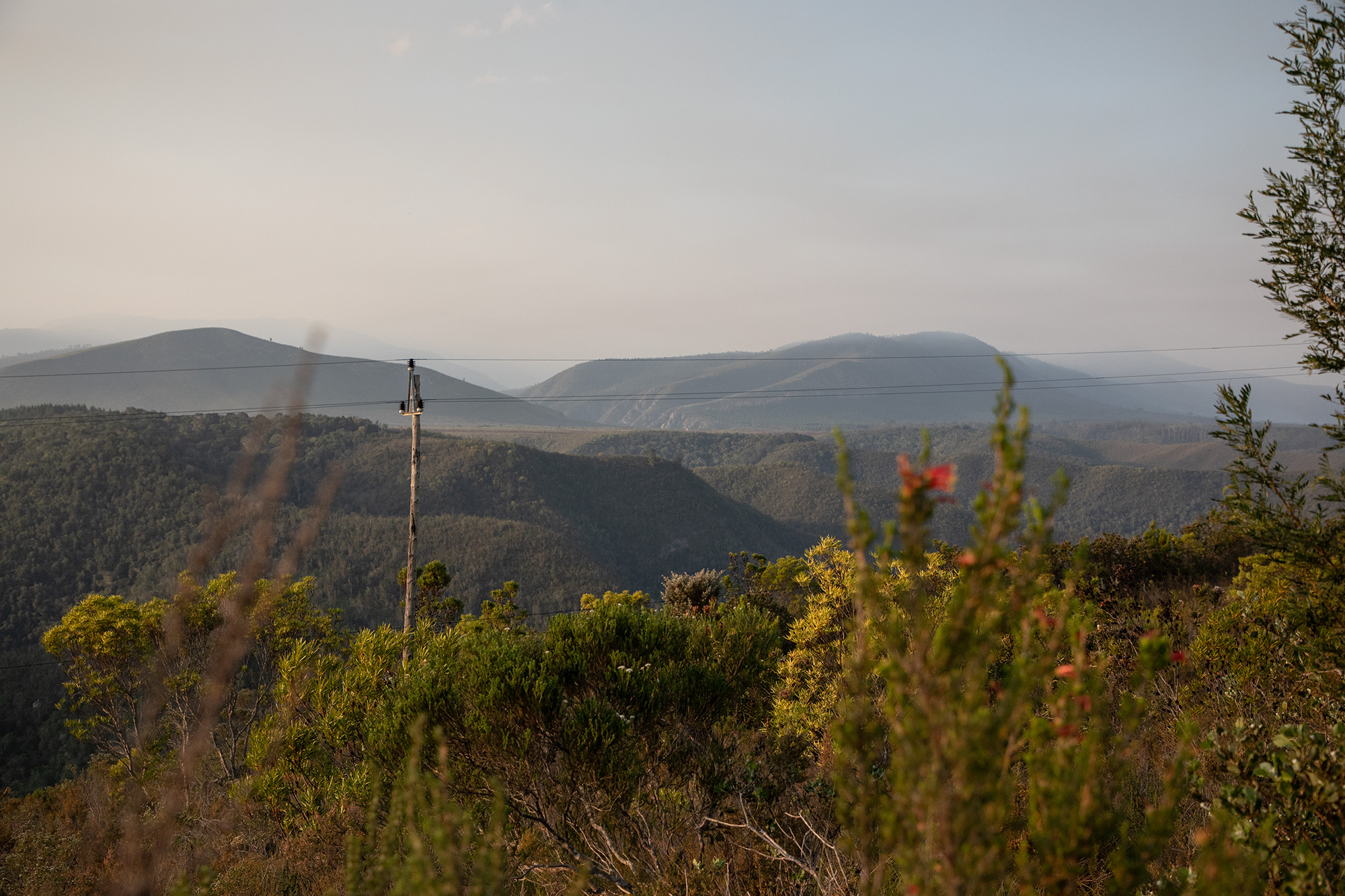
The settlement of Covie sits 35km outside central Plettenberg Bay, hidden from public view along the R102 past Nature’s Valley. There is only one road into the settlement, lined with trees. Entering Covie, the trees give way to several wooden houses that blend into the dark brown foliage nearby. As Daily Maverick drove through the main street, people waved and we were greeted next to a small graveyard flanked by a white church, which used to be the settlement’s central point.
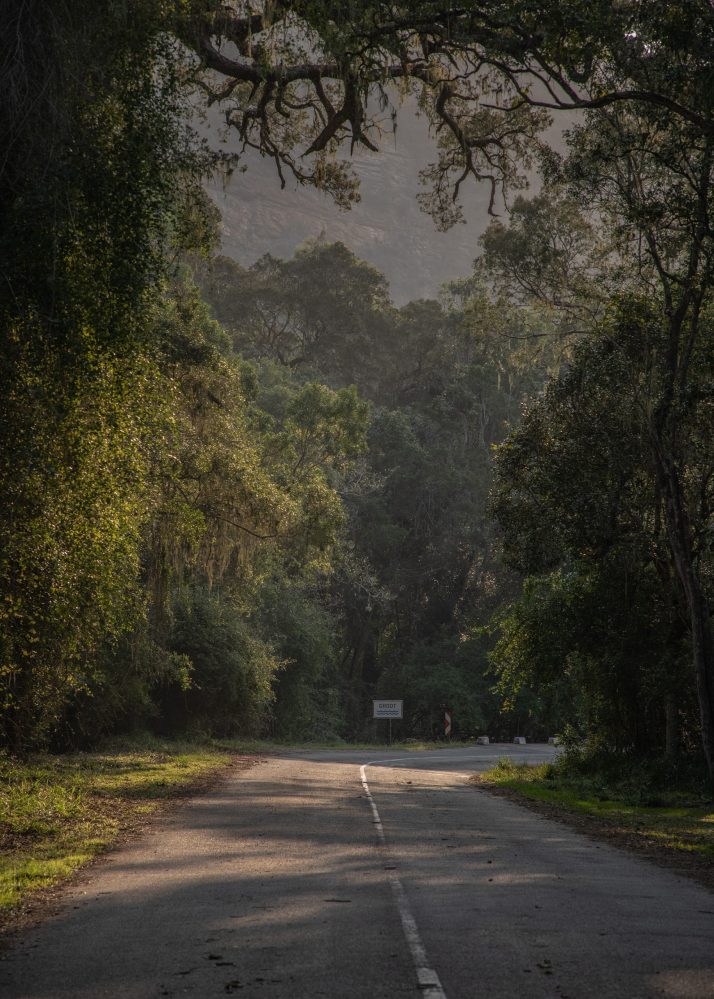
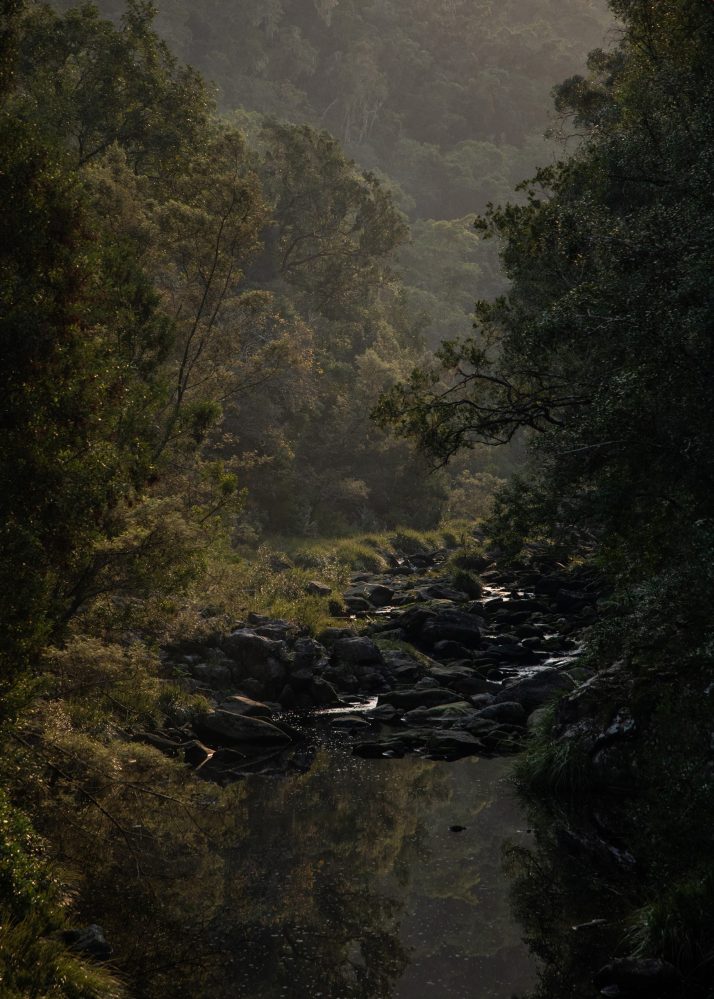
Seated within a small wooden abode, adorned with, gardening equipment, shovels, rakes and packs of fertilizer on one side and a small library of books of all genres on the other, were the CPA members, Constable, Eben Davids, Lashwen Barnardo and Edna Plaatjies. They explained the settlement’s history.
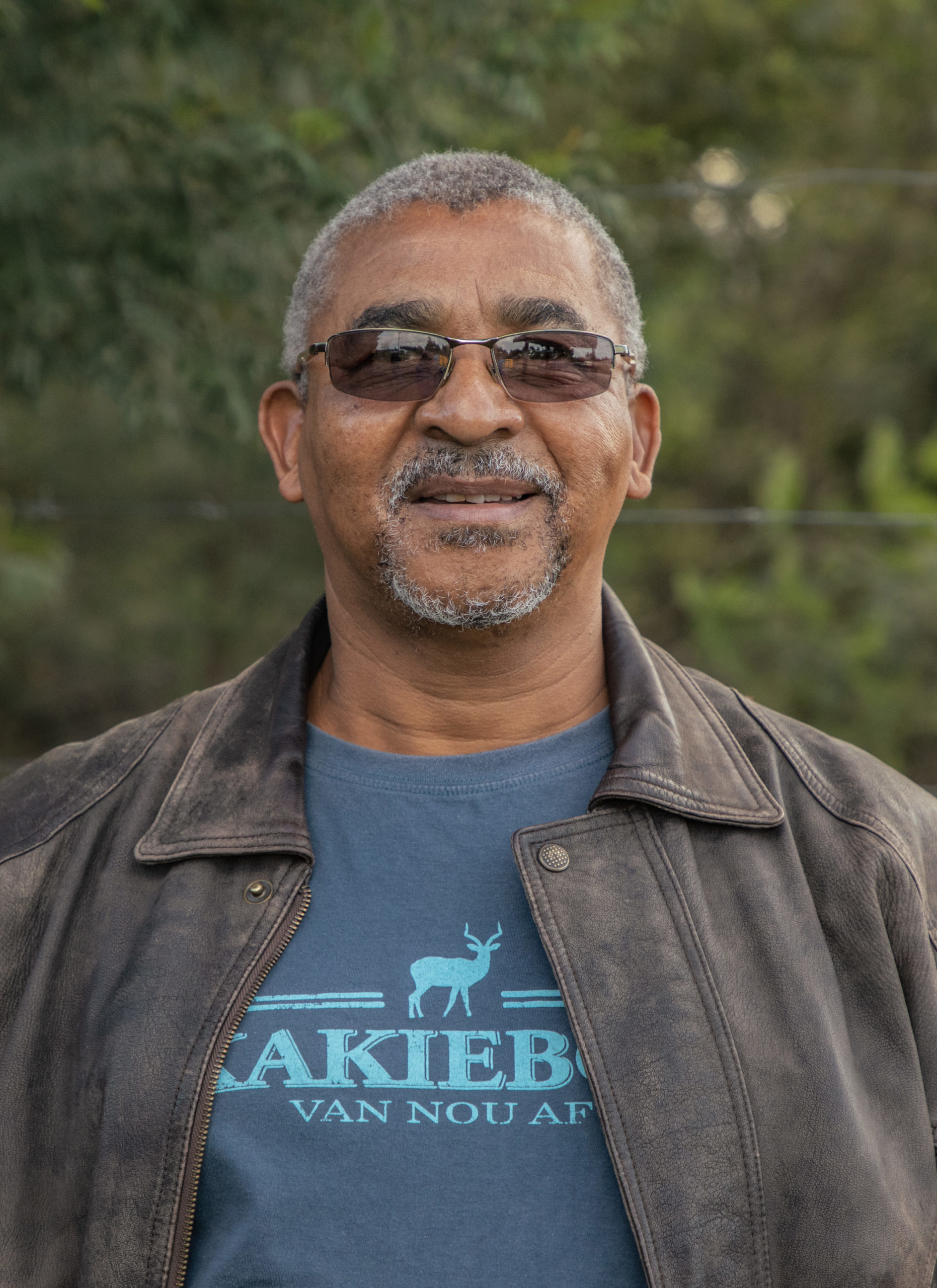

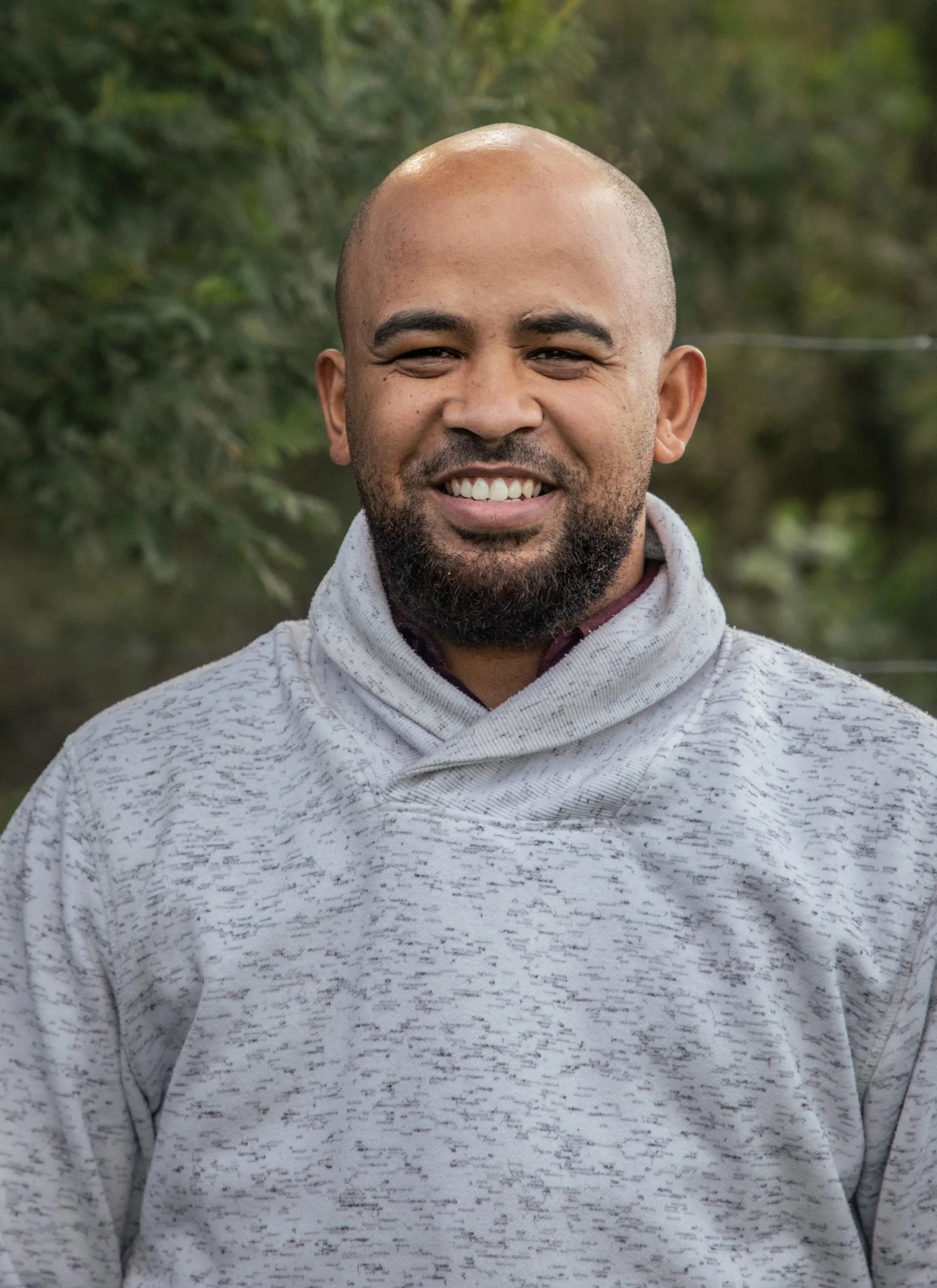
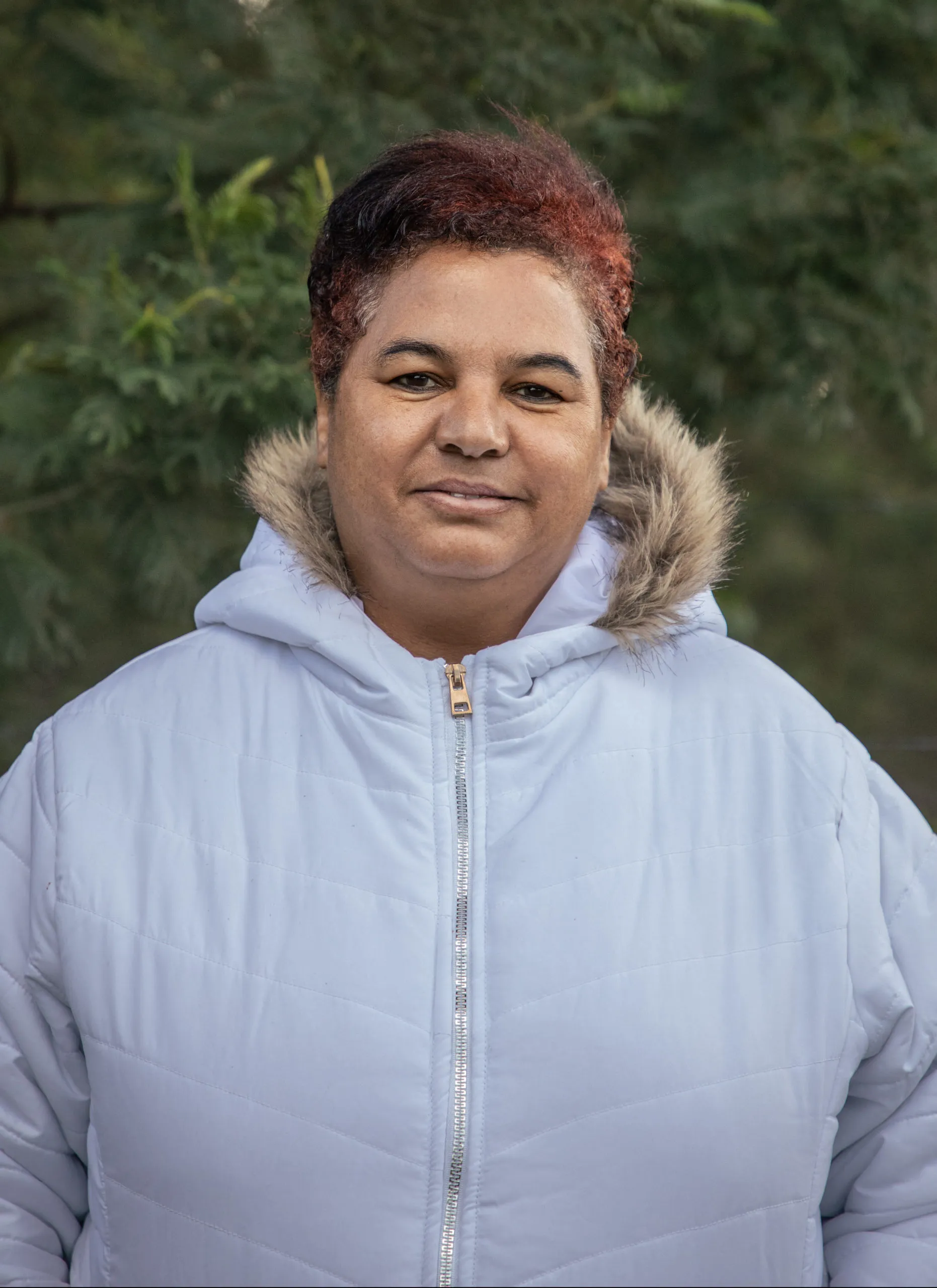
Then problems started in the 1960s.
The apartheid government’s forestry department decided to extend plantations within the Tsitsikamma region where Covie is located. “They wanted all the people out here because they [the government] wanted Covie for plantations,” said Constable, who grew up in the area. “What they did at the time was send R50 cheques to the people who were staying here at the time and the people that were landowners,” said Constable.
The R50 cheques were given to families in exchange for their land. Constable said some families — predominately the coloured families living there — refused to accept the cheques. Constable added that this put the government of the day in a quandary. However, many of the town’s white residents accepted the money. These residents, who were mainly employed by the forestry department, were given a choice: either leave Covie or be fired from their jobs. “And they left,” said Constable. Some of Covie’s white residents left for Plettenberg Bay and Knysna while others settled in Coldstream, which is now part of the Eastern Cape.
In 1964, the Forestry Department declared a portion of Covie’s commonage land — which the community used as common land for livestock grazing — as being a protected “forest on the basis that there was a shortage of land and a need to expand the declining forest”. Then ten years later, in 1974, another portion of commonage land was granted protected status and lost to the community.
In 1978, the Covie community was officially declared a ‘coloureds-only’ area by the apartheid government.
“Also, the assistance that was given for Covie at the time, was stopped,” said Constable. Legislation was also introduced to stop people from farming and keeping livestock and the community’s access to the ocean was also curtailed. Constable said people “became poor because they could not look after themselves”.
Constable said that after 1978, no development took place in Covie.
Driving through Covie, we saw no brick and mortar buildings, only wooden structures. Constable said that in recent years the settlement has had secured electricity, while filtered water from a nearby river is used as a water supply for human consumption. Surrounding roads are surfaced twice or thrice a year by the Bitou Municipality, the last of which occurred ahead of the government delegation’s arrival in April.
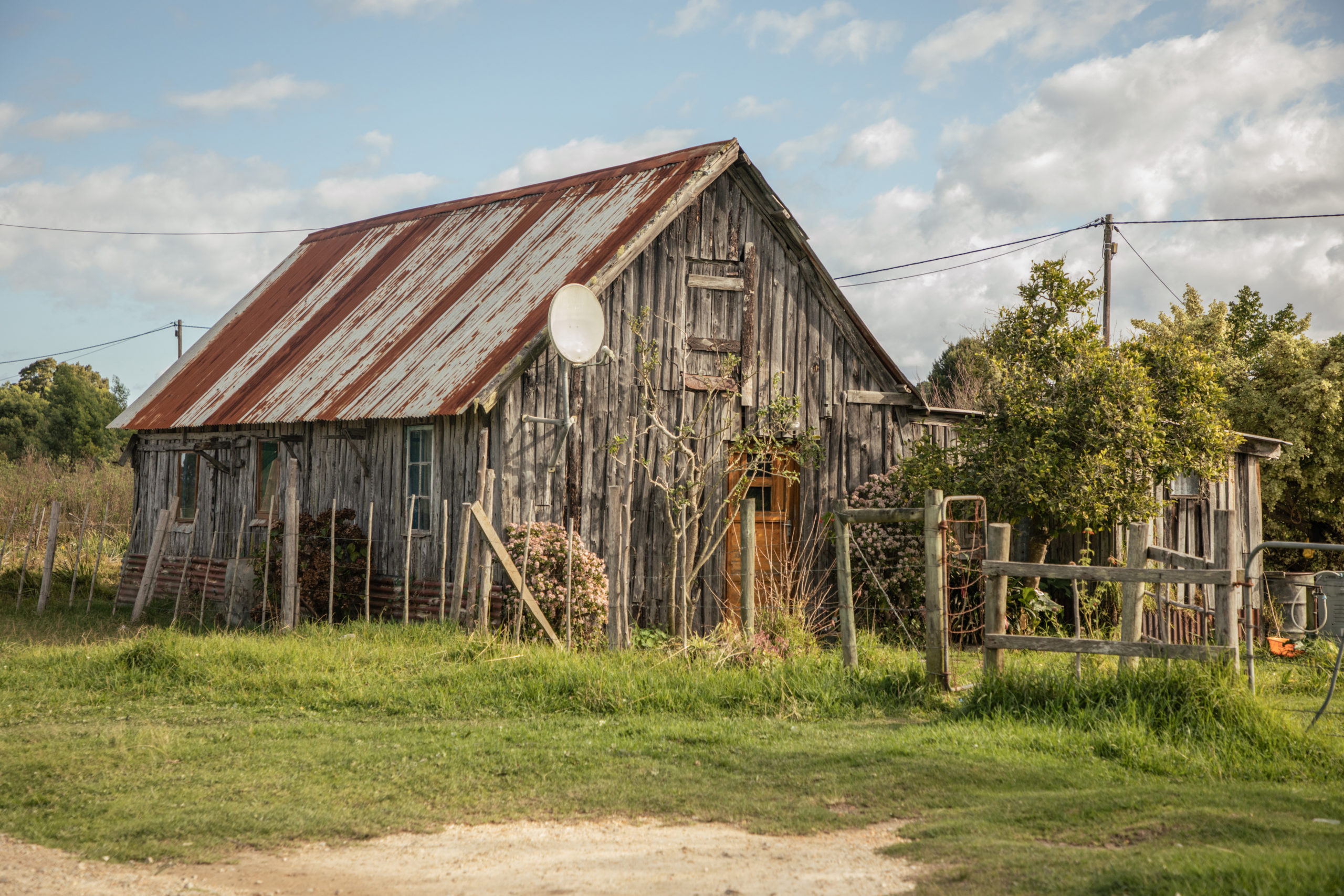
The restitution process
After the restitution process opened in 1996 under the new democratic government, Irene Barnardo — a descendant of Covie’s original land claimants — applied for restitution on behalf of families of the original inhabitants.
This claim was for both individual land lost and communal property in Covie.
The Covie claim is among 79,696 land claims that were made as part of South Africa’s restitution process in the post-apartheid dispensation of 1998. According to a presentation during a meeting of Parliament’s oversight committee on Agriculture, Land Reform and Rural Development, it was confirmed that 7,743 outstanding claims still needed to be completed.
Land restitution has proven to be a long and drawn-out process, with various stumbling blocks and delays.
One such example is District Six in Cape Town’s CBD. After numerous setbacks and a much-publicised court case brought by the District Six Working Committee, the community’s land claims process seems to finally be on track. Currently, there are 108 housing units being finalised for claimants who have waited since 1996 for their land as well as for District Six’s most elderly claimants. But the official handover is still to be determined.
It took almost 20 years from the start of claims in 1996 for the land claim to be fully completed. The land claim comprised both communal and individual land.
Constable told Daily Maverick the Covie land claim was completed in 2004, but there were several loose ends that weren’t tied up. One of the issues was with SANParks, who controlled 150 hectares of Covie property — through which the Otter Trail runs. Other ongoing issues included the community’s lack of access to the ocean.
Constable said the community had been compensated for the loss of the 150 hectares of land by SANParks.
On 30 April, a delegation made up of Deputy President David Mabuza, Western Cape Premier Alan Winde, ministers Thoko Didiza (Minister of Agriculture, Land Reform and Rural Development) and Patricia de Lille (Minister of Public Works and Infrastructure), and officials from the Bitou Municipality arrived in Covie to officially hand the land back to the community.
The delegation handed over R12.4-million in compensation to 411 households of the area made up of descendants of the original inhabitants and those who still live in Covie. A total of 764,000 hectares of individual land and common land was handed back to the community.
“With this land handover, the Covie community can now begin to independently determine their future, secure their livelihoods and regain their human dignity,” said the deputy president in his speech at the handover. “This event is a process of addressing the historical injustice of land inequality, displacement and dispossession,” said Mabuza in his speech.
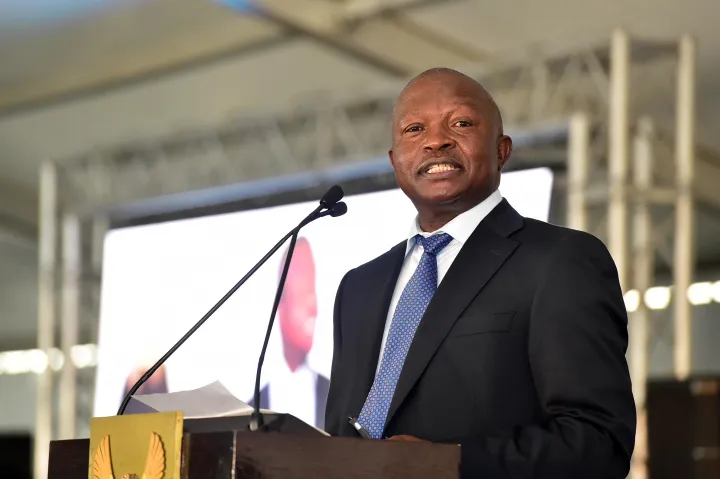
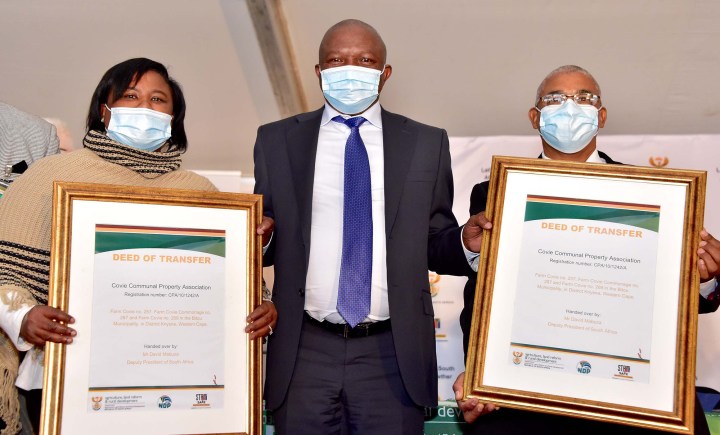
But for the community, the handover was bittersweet.
“For some of us there was excitement, it was also a reminder — to date, we can’t really figure out exactly what took so long because they could have done it a long time ago,” said Barnardo. “In the handover ceremony the government officials looked at us — Covie’s people — they saw almost a lack of excitement, but we’ve had ceremonies before and there’s always talk afterwards. We were very happy that we had something on paper so we can start building now,” said Plaatjies.
There was excitement from stakeholders to create opportunities within Covie. For Barnardo, it meant he would no longer need to travel outside the settlement in order to find opportunities for himself.
Plaatjies added, however, “I think there was [also] a lot of sadness. Many old people died… they missed this opportunity of seeing that their title deeds have been handed out,” said Plaatjies.
These include 92-year-old Josephine Dickson, who died a few days before the handover. She was not only a land claimant but the town’s midwife.
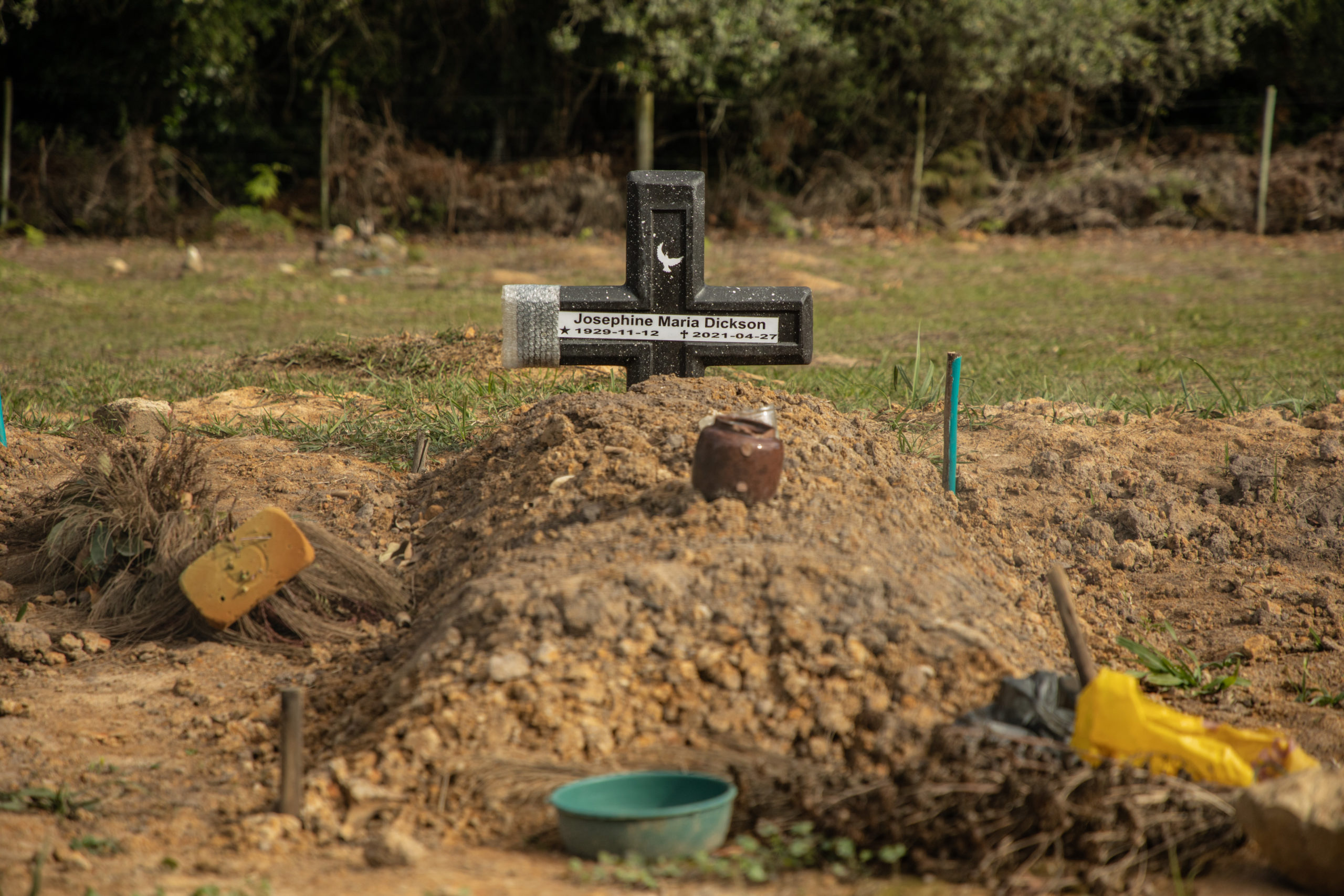
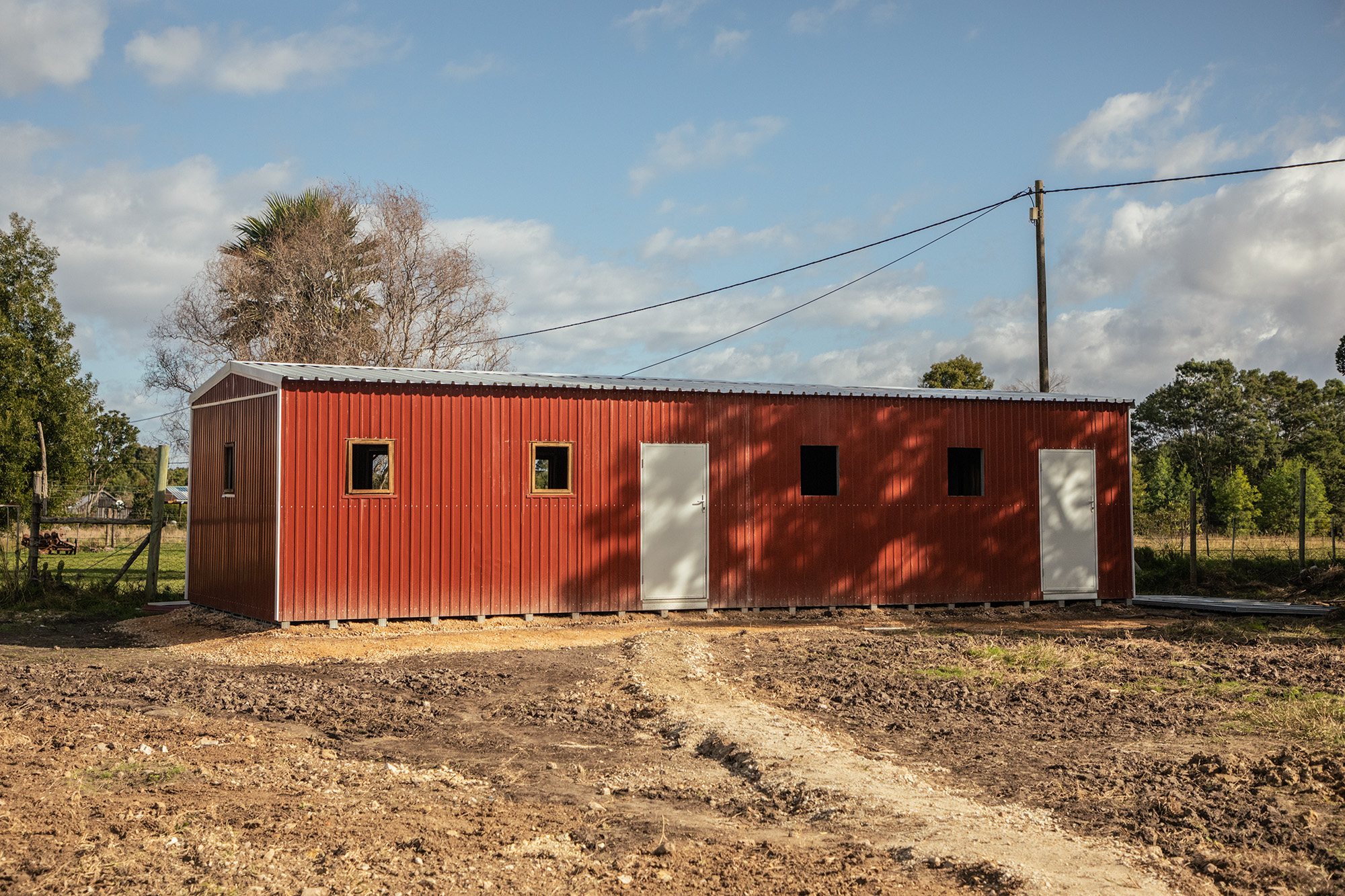
‘Start from a point’
So, what happens now that the settlement has its land back?
“Obviously, we must put our shoulders to the wheel,” said Constable.
Constable said the community was going to “start from a point”. The association decided it would use some of the restitution funding to pay unemployed Covie residents to help clean up the area, including the removal of invasive alien species.
“We’re trying to make this place look better. When your place looks better, it does something to your spirit,” said Constable.
An emergency focus is signage to Covie along the N2. “There’s no mention of Covie,” said Constable. Other suggestions would be to have information boards and establish links with tourism centres in Plettenberg Bay, Nature’s Valley and Stormsriver to promote Covie. The association also wants to create an information centre in the settlement.
“We’re looking at marketing Covie,” said Barnardo.
Another focus for the community is a hiking trail that runs through Covie. The association wants the trail cleaned up and additional trails for bikes and quad bikes to be introduced. “We want to see this hiking trail marketed to that we can see by the end of this year if we can have people that know about it,” said Constable.
In the long term, there are plans for housing with assistance from the government and the creation of accommodation sites in order to create employment opportunities for residents.
Currently, there are only wooden houses in the area but there are plans for Bitou Municipality to construct formal housing. Constable told Daily Maverick the municipality had already assisted with temporary housing for one of the settlement’s residents.
There are also plans by the association and the municipality for the creation of a library and clinic rooms A prefabricated structure for the clinic had already been provided by the municipality at the time of writing.
Currently, there are around 140 people living in Covie, with around 40 houses. “And ja, nearly everyone is related to one another,” joked Barnardo.
Most elderly residents, like Dickson, the settlement’s midwife, have passed on. The elderly, “lived for Covie — everything they did was to push that our land would be restored” said Constable.
The association was also looking to create a recreational space for children to play instead of the town’s dirt roads where youngsters typically gathered. “I think we chose a very fine project to start with,” said Barnardo.
He admits that the mood in Covie has changed. “There was a sense of depression, like we’re not heading anywhere but ever since we finally received our title deed, that changed — people are more hopeful”.
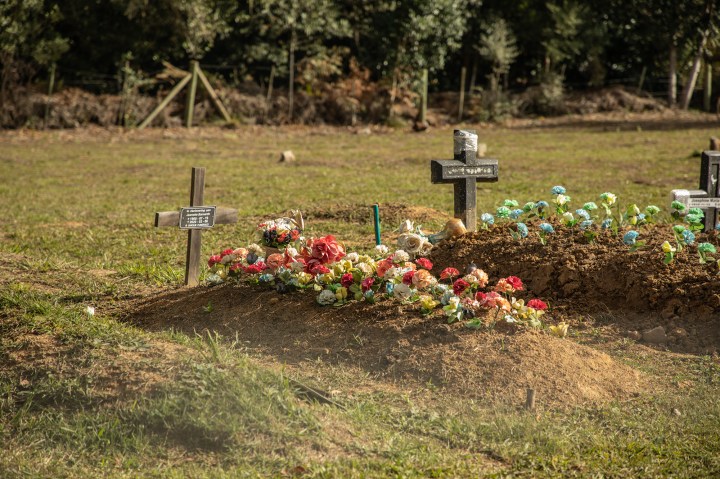
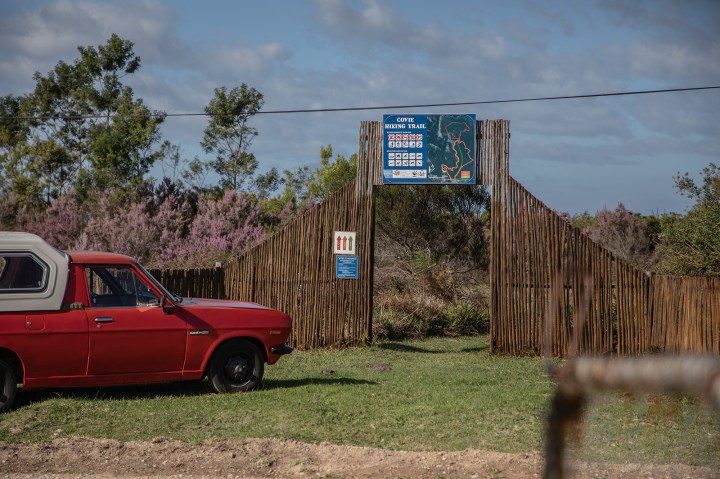
And the future?
The association wants to move Covie forward without losing its rural roots. “We’d rather focus on creating jobs than bringing in thousands of people — that’s not what the plans are”.
When asked by Daily Maverick what he thought Covie would look like in 50 years, “I see a school in Covie, I see maybe a clinic here…I see employment being generated here”.
With no schools in the area, children need to travel to The Crags Primary School (some 20km away) or Plettenbergbaai Sekondêre Skool (some 40km away) for education.
Constable said his vision of Covie’s future is “a completely different scene than what we’re having now — it has been almost restored to its original state.
“What was undone, it’s not going to take a year or two, it’s going to take a while to rectify and restore Covie,” said Constable.
“In 50 years, Covie will definitely be thriving,” Barnardo concluded. DM
Daily Maverick © All rights reserved
| Cookie | Duration | Description |
|---|---|---|
| __cfduid | 1 month | The cookie is used by cdn services like CloudFlare to identify individual clients behind a shared IP address and apply security settings on a per-client basis. It does not correspond to any user ID in the web application and does not store any personally identifiable information. |
| _GRECAPTCHA | 5 months 27 days | This cookie is set by Google. In addition to certain standard Google cookies, reCAPTCHA sets a necessary cookie (_GRECAPTCHA) when executed for the purpose of providing its risk analysis. |
| cid | 1 year | This is an important cookie in making credit card transaction on the website. It allows the online transaction without storing the credit card information.This service is provided by Stripe.com. |
| connect.sid | 1 month | This cookie is used for authentication and for secure log-in. It registers the log-in information. |
| cookielawinfo-checkbox-advertisement | 1 year | Set by the GDPR Cookie Consent plugin, this cookie is used to record the user consent for the cookies in the "Advertisement" category . |
| cookielawinfo-checkbox-analytics | 11 months | This cookie is set by GDPR Cookie Consent plugin. The cookie is used to store the user consent for the cookies in the category "Analytics". |
| cookielawinfo-checkbox-functional | 11 months | The cookie is set by GDPR cookie consent to record the user consent for the cookies in the category "Functional". |
| cookielawinfo-checkbox-necessary | 11 months | This cookie is set by GDPR Cookie Consent plugin. The cookies is used to store the user consent for the cookies in the category "Necessary". |
| cookielawinfo-checkbox-others | 11 months | This cookie is set by GDPR Cookie Consent plugin. The cookie is used to store the user consent for the cookies in the category "Other. |
| cookielawinfo-checkbox-performance | 11 months | This cookie is set by GDPR Cookie Consent plugin. The cookie is used to store the user consent for the cookies in the category "Performance". |
| CookieLawInfoConsent | 1 year | Records the default button state of the corresponding category & the status of CCPA. It works only in coordination with the primary cookie. |
| elementor | never | This cookie is used by the website's WordPress theme. It allows the website owner to implement or change the website's content in real-time. |
| JSESSIONID | session | Used by sites written in JSP. General purpose platform session cookies that are used to maintain users' state across page requests. |
| PHPSESSID | session | This cookie is native to PHP applications. The cookie is used to store and identify a users' unique session ID for the purpose of managing user session on the website. The cookie is a session cookies and is deleted when all the browser windows are closed. |
| viewed_cookie_policy | 11 months | The cookie is set by the GDPR Cookie Consent plugin and is used to store whether or not user has consented to the use of cookies. It does not store any personal data. |
| Cookie | Duration | Description |
|---|---|---|
| __atuvc | 1 year 1 month | This cookie is set by Addthis to make sure you see the updated count if you share a page and return to it before our share count cache is updated. |
| __atuvs | 30 minutes | This cookie is set by Addthis to make sure you see the updated count if you share a page and return to it before our share count cache is updated. |
| __cf_bm | 30 minutes | This cookie is set by CloudFlare. The cookie is used to support Cloudflare Bot Management. |
| __pvi | 1 day | This cookie is used for the implementation of the news content from other sites. |
| bcookie | 2 years | This cookie is set by linkedIn. The purpose of the cookie is to enable LinkedIn functionalities on the page. |
| lidc | 1 day | This cookie is set by LinkedIn and used for routing. |
| Cookie | Duration | Description |
|---|---|---|
| d | 3 months | This cookie tracks anonymous information on how visitors use the website. |
| Cookie | Duration | Description |
|---|---|---|
| __gads | 1 year 24 days | This cookie is set by Google and stored under the name dounleclick.com. This cookie is used to track how many times users see a particular advert which helps in measuring the success of the campaign and calculate the revenue generated by the campaign. These cookies can only be read from the domain that it is set on so it will not track any data while browsing through another sites. |
| _ga | 2 years | This cookie is installed by Google Analytics. The cookie is used to calculate visitor, session, campaign data and keep track of site usage for the site's analytics report. The cookies store information anonymously and assign a randomly generated number to identify unique visitors. |
| _ga_Y7XD5FHQVG | 2 years | This cookie is installed by Google Analytics. |
| _gat_UA-10686674-1 | 1 minute | This is a pattern type cookie set by Google Analytics, where the pattern element on the name contains the unique identity number of the account or website it relates to. It appears to be a variation of the _gat cookie which is used to limit the amount of data recorded by Google on high traffic volume websites. |
| _gid | 1 day | This cookie is installed by Google Analytics. The cookie is used to store information of how visitors use a website and helps in creating an analytics report of how the website is doing. The data collected including the number visitors, the source where they have come from, and the pages visted in an anonymous form. |
| ajs_anonymous_id | never | This cookie is set by Segment.io to check the number of ew and returning visitors to the website. |
| ajs_user_id | never | The cookie is set by Segment.io and is used to analyze how you use the website |
| ANON_ID | 3 months | This cookie is provided by Tribalfusion. The cookie is used to give a unique number to visitors, and collects data on user behaviour like what page have been visited. This cookie also helps to understand which sale has been generated by as a result of the advertisement served by third party. |
| jam_heavy_ga_session | 5 years | This cookie is installed by Google Analytics. |
| UserID1 | 3 months | The cookie sets a unique anonymous ID for a website visitor. This ID is used to continue to identify users across different sessions and track their activities on the website. The data collected is used for analysis. |
| uvc | 1 year 1 month | The cookie is set by addthis.com to determine the usage of Addthis.com service. |
| Cookie | Duration | Description |
|---|---|---|
| __tbc | 2 years | This cookie is used for measuring the efficiency of advertisement by registering data on visitors from multiple website. |
| _cc_aud | 8 months 26 days | The cookie is set by crwdcntrl.net. The purpose of the cookie is to collect statistical information in an anonymous form about the visitors of the website. The data collected include number of visits, average time spent on the website, and the what pages have been loaded. These data are then used to segment audiences based on the geographical location, demographic, and user interest provide relevant content and for advertisers for targeted advertising. |
| _cc_cc | session | The cookie is set by crwdcntrl.net. The purpose of the cookie is to collect statistical information in an anonymous form about the visitors of the website. The data collected include number of visits, average time spent on the website, and the what pages have been loaded. These data are then used to segment audiences based on the geographical location, demographic, and user interest provide relevant content and for advertisers for targeted advertising. |
| _cc_dc | 8 months 26 days | The cookie is set by crwdcntrl.net. The purpose of the cookie is to collect statistical information in an anonymous form about the visitors of the website. The data collected include number of visits, average time spent on the website, and the what pages have been loaded. These data are then used to segment audiences based on the geographical location, demographic, and user interest provide relevant content and for advertisers for targeted advertising. |
| _cc_id | 8 months 26 days | The cookie is set by crwdcntrl.net. The purpose of the cookie is to collect statistical information in an anonymous form about the visitors of the website. The data collected include number of visits, average time spent on the website, and the what pages have been loaded. These data are then used to segment audiences based on the geographical location, demographic, and user interest provide relevant content and for advertisers for targeted advertising. |
| _kuid_ | 5 months 27 days | The cookie is set by Krux Digital under the domain krxd.net. The cookie stores a unique ID to identify a returning user for the purpose of targeted advertising. |
| _rxuuid | 1 year | The main purpose of this cookie is targeting, advertesing and effective marketing. This cookie is used to set a unique ID to the visitors, which allow third party advertisers to target the visitors with relevant advertisement up to 1 year. |
| ANON_ID_old | 3 months | This cookie helps to categorise the users interest and to create profiles in terms of resales of targeted marketing. This cookie is used to collect user information such as what pages have been viewed on the website for creating profiles. |
| bscookie | 2 years | This cookie is a browser ID cookie set by Linked share Buttons and ad tags. |
| CMID | 1 year | The cookie is set by CasaleMedia. The cookie is used to collect information about the usage behavior for targeted advertising. |
| CMPRO | 3 months | This cookie is set by Casalemedia and is used for targeted advertisement purposes. |
| CMPS | 3 months | This cookie is set by Casalemedia and is used for targeted advertisement purposes. |
| CMST | 1 day | The cookie is set by CasaleMedia. The cookie is used to collect information about the usage behavior for targeted advertising. |
| DSID | 1 hour | This cookie is setup by doubleclick.net. This cookie is used by Google to make advertising more engaging to users and are stored under doubleclick.net. It contains an encrypted unique ID. |
| google_push | 5 minutes | This cookie is set by the Bidswitch. This cookie is used to collect statistical data related to the user website visit such as the number of visits, average time spent on the website and what pages have been loaded. This collected information is used to sort out the users based on demographics and geographical locations inorder to serve them with relevant online advertising. |
| i | 1 year | The purpose of the cookie is not known yet. |
| id | 3 months | The main purpose of this cookie is targeting and advertising. It is used to create a profile of the user's interest and to show relevant ads on their site. This Cookie is set by DoubleClick which is owned by Google. |
| IDE | 1 year 24 days | Used by Google DoubleClick and stores information about how the user uses the website and any other advertisement before visiting the website. This is used to present users with ads that are relevant to them according to the user profile. |
| IDSYNC | 1 year | This cookie is used for advertising purposes. |
| KADUSERCOOKIE | 3 months | The cookie is set by pubmatic.com for identifying the visitors' website or device from which they visit PubMatic's partners' website. |
| KTPCACOOKIE | 1 day | This cookie is set by pubmatic.com for the purpose of checking if third-party cookies are enabled on the user's website. |
| ljt_reader | 1 year | This is a Lijit Advertising Platform cookie. The cookie is used for recognizing the browser or device when users return to their site or one of their partner's site. |
| loc | 1 year 1 month | This cookie is set by Addthis. This is a geolocation cookie to understand where the users sharing the information are located. |
| mc | 1 year 1 month | This cookie is associated with Quantserve to track anonymously how a user interact with the website. |
| mt_mop | 1 month | Stores information about how the user uses the website such as what pages have been loaded and any other advertisement before visiting the website for the purpose of targeted advertisements. |
| personalization_id | 2 years | This cookie is set by twitter.com. It is used integrate the sharing features of this social media. It also stores information about how the user uses the website for tracking and targeting. |
| suid_legacy | 1 year | This cookie is used to collect information on user preference and interactioin with the website campaign content. This cookie is used for promoting events and products by the webiste owners on CRM-campaign-platform. |
| TDCPM | 1 year | The cookie is set by CloudFlare service to store a unique ID to identify a returning users device which then is used for targeted advertising. |
| TDID | 1 year | The cookie is set by CloudFlare service to store a unique ID to identify a returning users device which then is used for targeted advertising. |
| test_cookie | 15 minutes | This cookie is set by doubleclick.net. The purpose of the cookie is to determine if the user's browser supports cookies. |
| tluid | 3 months | This cookie is set by the provider AdRoll.This cookie is used to identify the visitor and to serve them with relevant ads by collecting user behaviour from multiple websites. |
| tuuid | 1 year | This cookie is set by .bidswitch.net. The cookies stores a unique ID for the purpose of the determining what adverts the users have seen if you have visited any of the advertisers website. The information is used for determining when and how often users will see a certain banner. |
| tuuid_lu | 1 year | This cookie is set by .bidswitch.net. The cookies stores a unique ID for the purpose of the determining what adverts the users have seen if you have visited any of the advertisers website. The information is used for determining when and how often users will see a certain banner. |
| uid | 5 months 27 days | This cookie is used to measure the number and behavior of the visitors to the website anonymously. The data includes the number of visits, average duration of the visit on the website, pages visited, etc. for the purpose of better understanding user preferences for targeted advertisments. |
| uuid | 1 year 27 days | To optimize ad relevance by collecting visitor data from multiple websites such as what pages have been loaded. |
| VISITOR_INFO1_LIVE | 5 months 27 days | This cookie is set by Youtube. Used to track the information of the embedded YouTube videos on a website. |
| wfivefivec | 1 year 1 month | The domain of this cookie is owned by Dataxu. The main business activity of this cookie is targeting and advertising. This cookie tracks the advertisement report which helps us to improve the marketing activity. |
| xbc | 2 years | This cookie is used for optmizing the advertisement on the website more relevant by analysing the user behaviour and interaction with the website. |
| YSC | session | This cookies is set by Youtube and is used to track the views of embedded videos. |
| Cookie | Duration | Description |
|---|---|---|
| __browsiSessionID | 30 minutes | No description available. |
| __browsiUID | 1 year | No description available. |
| __cflb | 23 hours | This cookie is used by Cloudflare for load balancing. |
| __gpi | 1 year 24 days | No description |
| ajs_group_id | never | This cookie is set by Segment.io. The purpose of the cookie is currently not identified. |
| blkbs | 6 days 23 hours | No description |
| charitable_session | 1 day | No description available. |
| cookietest | session | No description |
| debug | never | No description available. |
| gCStest | 7 years 1 month 26 days 16 hours | No description |
| muc_ads | 2 years | No description |
| revengine_browser_id | session | No description |
| revengine-browser-token | session | RevEngine Data Tool. |
| rl_user_id | never | No description available. |
| tf_respondent_cc | 6 months | No description |
| UserMatchHistory | 1 month | Linkedin - Used to track visitors on multiple websites, in order to present relevant advertisement based on the visitor's preferences. |
| vic_loc_error | 10 minutes | No description |
| vicinity_id | 1 year 10 months 24 days 11 hours | Vicinity Advertising. |
Unlike our competitors, we don’t force you to pay to read the news but we do need your email address to make your experience better.
Nearly there! Create a password to finish signing up with us:
Please enter your password or get a sign in link if you’ve forgotten
Open Sesame! Thanks for signing up.
The market failure of journalism has caused a 70% loss of jobs in our industry. The result is entire regions of South Africa with little to no editorial coverage - and no independent accountability measures because of it. Daily Maverick has proven that we can deliver impact on South Africa.
There's a misconception that Daily Maverick, because it's a national news publisher, is in every corner of the country.
We're not. But we need to be. Help us get there.
Already an Insider?
Click here to login

 Become an Insider
Become an InsiderThere are many great benefits to being a Maverick Insider. Removing advertising from your browsing experience is one of them - we don't just block ads, we redesign our pages to look smarter and load faster.
Click here to see other benefits and to sign-up to our reader community supporting quality, independent journalism.
Find out More

Please peer review 3 community comments before your comment can be posted